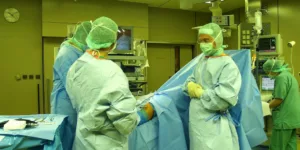In athletes, injuries are the result of trauma. They get thrown down during a game or they slip and hurt themselves. Meniscal injuries are the most prevalent affliction for sportspeople. However, you don’t have to be an athlete to get a meniscus tear. Just like any other injury, the meniscal tear is painful and exhausting. If you’ve hurt yourself, then you may need meniscus tear surgery. The decision about the surgical intervention depends on where the tear is located and how big it is. Meniscus surgery is generally the recommended option. If you’re dealing with a torn meniscus, then you need to know the following things.
There are different types of meniscus surgeries
The first thing that the doctor does is determine if a tear is present and whether symptoms like pain, inflammation or immobility aren’t caused by something else. A physical examination is usually enough to determine if there is a torn piece of cartilage in the knee. Here are several types of surgery for torn meniscus, including:
- Partial meniscectomy – the damaged part of the cartilage is removed during arthroscopic surgery. Some of the meniscus is removed from the tibio-femoral joint with the help of a small shaver. The undamaged part of the meniscus remains untouched. Postoperative protection is necessary.
- Meniscus repair – repair is limited to the peripheral area of the meniscus. A repair can be done provided that the meniscus has a blood supply. Meniscus repair has a longer recovery time.
- Meniscus replacement – a knee joint replacement is a good option for patients who are young and active. If most of the cartilage has been taken out, then it’s replaced so as to avoid degenerative changes.
Recovery from meniscus tear surgery is fast
People mistakenly believe that meniscus tear surgery puts patients out of action for a long time. The truth is that you recover very fast from the surgical intervention. You can sustain weight on the knee the very next day. Physical therapy is necessary to avoid rigidity. Just like NBA players, you can make a full recovery in a couple of months. The vast majority of patients recover with no lasting health effects, but they do have to wear a knee immobilizer or use crutches during that time.
Recovery becomes a long-term commitment. To be more precise, you are required to maintain a healthy body weight and steer away from activities that solicit your body too much. Prognosis for returning to normal activity depends on your motivation. Do your best to control physical therapy and to eat healthily.
How to prepare for meniscus tear surgery
If you’re going under the knife, then it’s recommendable not to eat or drink anything the midnight prior to your surgery. It’s essential to complete all the testing and appointments ahead of time. If you happen to develop any health changes, like fever or rashes, you need to get in touch with your surgeon immediately. Generally speaking, there is no reason to be worried. What do you do after the surgical intervention? You just arrange for someone to bring you home.








